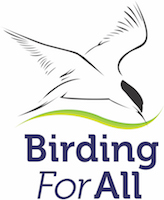This article first appeared in the September 2023 edition of Birdwatching Magazine
“Is that a Marsh Frog?” I asked Hawkeye as we sat on the viewing ramp overlooking the vast reedbeds of a local reserve.
“Nope” came a voice behind me from a passing stranger. “It’s a Raven” he added pointing towards the sky.
I looked up to see a Raven directly over my head. ‘Kronk’ he obligingly called. A moment later the marsh frog called again from the water below.
“No one likes a smartarse”, I thought, referring to the frog, or possibly the passing stranger, who had, by then, passed along the path.
I’ve seen this phenomena often.
I will be sitting on the supplied bench gazing across a reed-clad lake. My scope standing by in case a wader dares the deep water’s edge. On arrival I will have checked all the ducks for the unusual. Four Mallard, four Gadwall, two Shovelers and a Tuftie, not counting the pair of coots and an intermittent moorhen. I will have scanned across the reedbeds hoping to accidentally discover a Bearded Tit, but will have just have seen beardless Reed Buntings. Each tree would have been quizzed for cuckoos or raptors according to season. Bushes around the ramp will have been thoroughly and repeatedly enquired of for migrants or breeders. I will then have settled down to see what turns up for an hour or two until the sun burns my scalp or the wind chaps my lips according to the season, although these days both might apply on any day of the year. Scalp protecting hats and lip protecting scarves make it to the car, but rarely manage to catch my eye when I disembark… such is the unfailingly, failing memory of us decrepit crumblies.
The phenomena is that of the tortoise and the hare. Me tortoise, most birders, hares.
Being fit and fidgety most birders will walk miles between hides. It’s true they will see birds that are drawn by the places to which I cannot get. On my best days I might get to the kingfisher hide and hope, or start at the other end of the reserve and enjoy the wet woodland warblers or winter finches. But most times my old bones and natural indolence trap me within arthritic range of the motor. These days, downhill and with the wind behind me, my trusty rollator allows me to get to the ramp but rarely further.
Am I bothered? Well, a bit, to be fair, but not so much because there are many ways to skin a cat. Letting the birds come to you depends on being in a magnetic spot. They are not that rare. Birds need to feed, to drink and to migrate.
Sitting on the ramp in spring and autumn can be by a raptor conveyor belt. Ospreys, Black Kites, Honey Buzzards and Red Kites fly by. Purple Herons and Great Egrets are not unknown and in high summer hirundines dodge as many as forty hobbies! Even in winter one can watch out for the roosting harriers and over-wintering bitterns.
Birders have come and gone and in between birds visit me. I’ll not forget the October day that several families of bearded tits joined me on the ramp pinging in the bushes too close for binocular views. Or having an hepatic cuckoo fly right at me unaware of my presence.
There are slow days of course, but if the weather is kind and the bench not too unforgivingly hard on my tail bone, I am content to watch the cloud shapes and breathe in the breeze and to watch the shadows and shapes in windblown reedbeds.





